Active 1944–45 | ||
 | ||
Engagements Operation MeridianBattle of OkinawaNaval bombardments of Japan | ||
Kamikaze attacks on the british pacific fleet at okinawa australian war memorial
The British Pacific Fleet (BPF) was a Royal Navy formation which saw action against Japan during the Second World War. The fleet was composed of British Commonwealth naval vessels. The BPF formally came into being on 22 November 1944. Its main base was at Sydney, Australia, with a forward base at Manus Island. One of the largest fleets ever assembled by the Royal Navy, by VJ Day it had four battleships and six fleet aircraft carriers, fifteen smaller aircraft carriers, eleven cruisers, and numerous smaller warships, submarines, and support vessels.
Contents
- Kamikaze attacks on the british pacific fleet at okinawa australian war memorial
- Background
- Constituent forces
- Logistics
- Operations
- Allied co operation
- Ships
- References
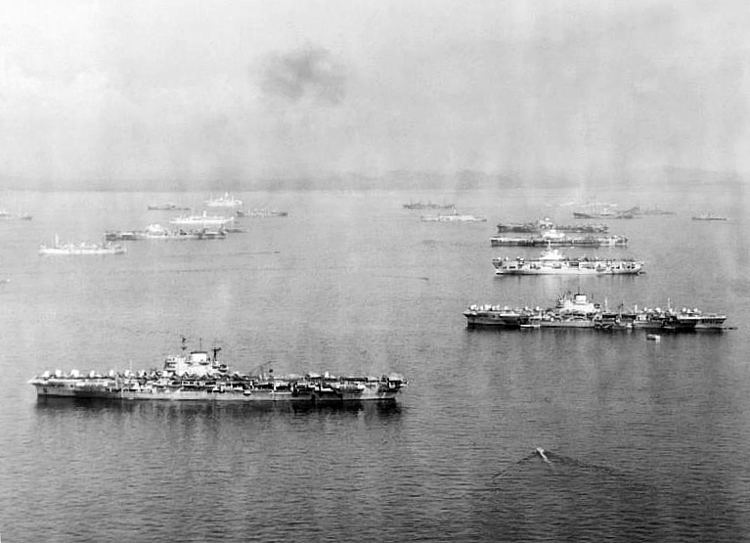
Background
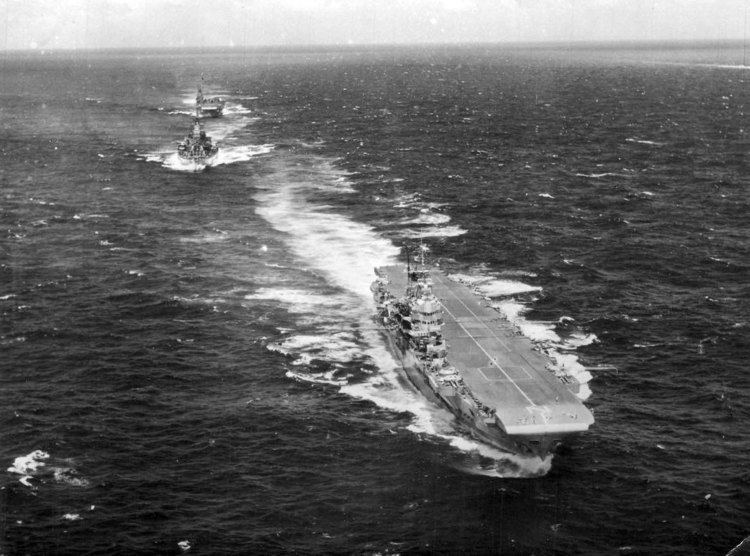
Following their retreat to the western side of the Indian Ocean in 1942, British naval forces did not return to the South West Pacific theatre until 17 May 1944, when an Anglo-American carrier task force implemented Operation Transom, a joint raid on Surabaya, Java.
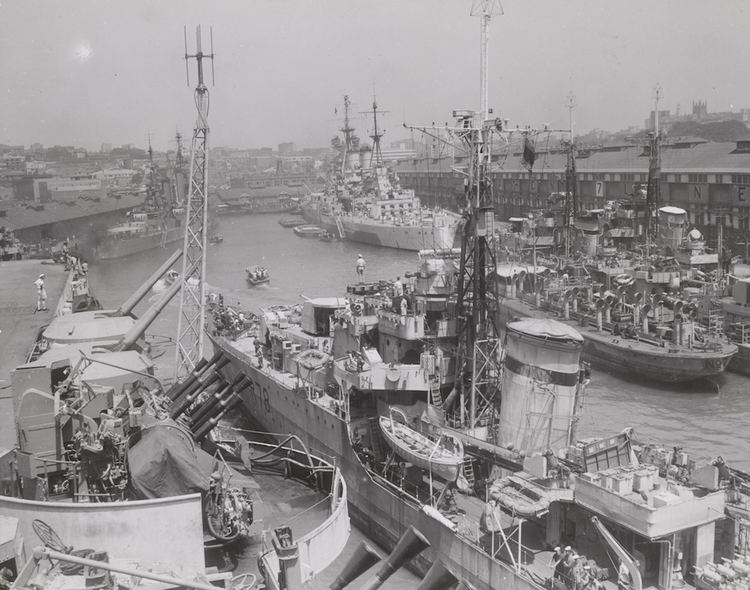
The US was liberating British territories in the Pacific and extending its influence. It was therefore seen as a political and military imperative by the British Government to restore a British presence in the region and to deploy British forces against Japan. The British Government was determined that British territories, such as Hong Kong, should be recaptured by British forces.
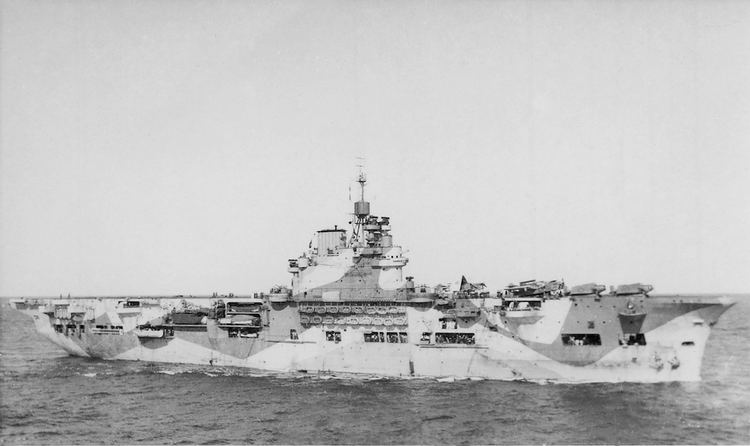
The British Government was not initially unanimous on the commitment of the BPF. Churchill, in particular, argued against it, not wishing to be a visibly junior partner in what had been exclusively the United States' battle. He also considered that a British presence would be unwelcome and should be concentrated on Burma and Malaya. Naval planners, supported by the Chiefs of Staff, believed that such a commitment would strengthen British influence and the British Chiefs of Staff considered mass resignation, so strongly held were their opinions.
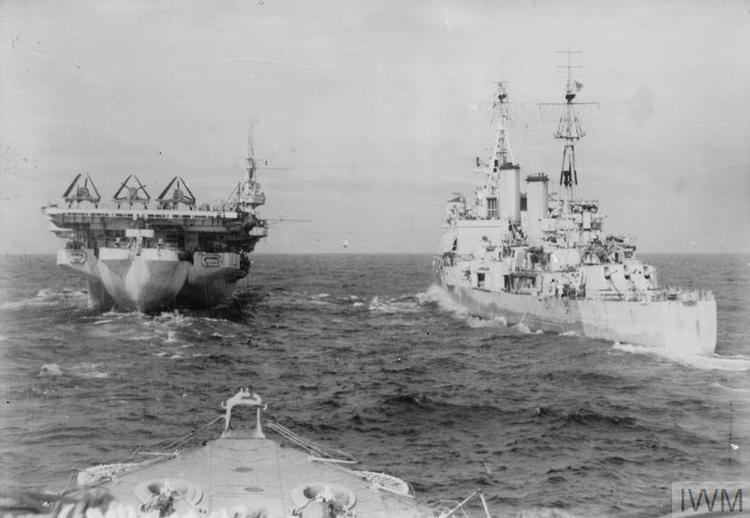
The Admiralty had proposed a British role in the Pacific in early 1944 but the initial USN response had been discouraging. Admiral Ernest King, Commander-in-Chief United States Fleet and Chief of Naval Operations, an Anglophobe, was reluctant to concede any such role and raised a number of objections, and insisted that the BPF should be self-sufficient. These were eventually overcome or discounted and at a meeting, US President Franklin D. Roosevelt "intervened to say that the British Fleet was no sooner offered than accepted. In this, though the fact was not mentioned, he overruled Admiral King's opinion".
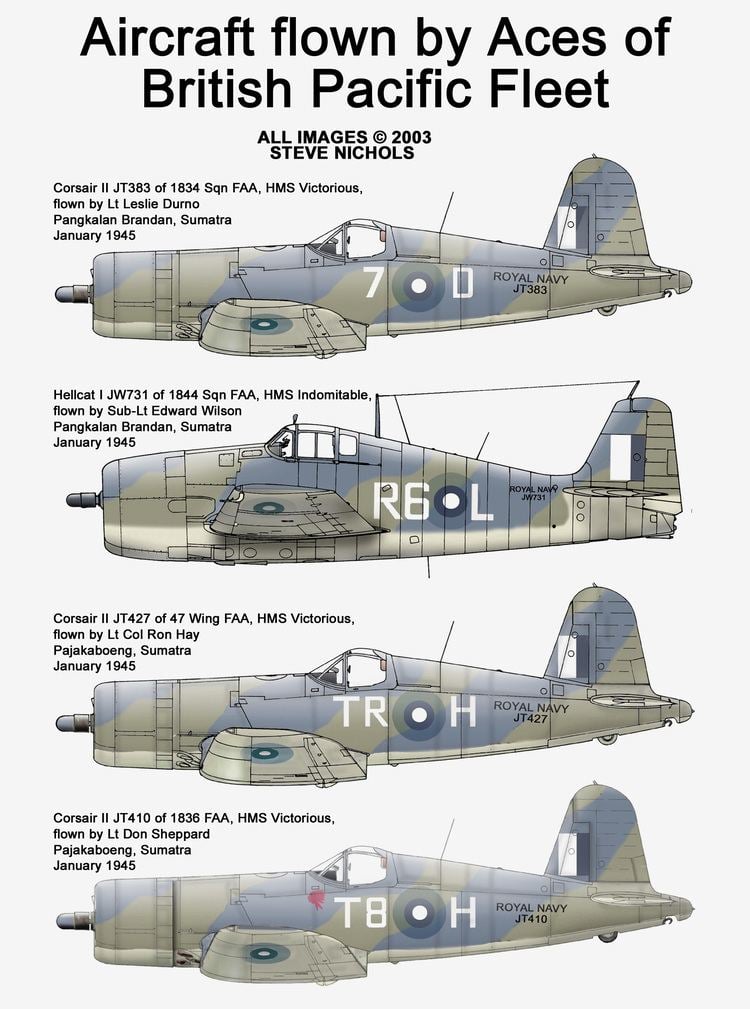
The Australian Government had sought US military assistance in 1942, when it was faced with the possibility of Japanese invasion. While Australia had made a significant contribution to the Pacific War, it had never been an equal partner with its US counterparts in strategy. It was argued that a British presence would act as a counterbalance to the powerful and increasing US presence in the Pacific.
Constituent forces
The fleet was founded when Admiral Sir Bruce Fraser struck his flag at Trincomalee as Commander-in-Chief of the British Eastern Fleet and hoisted it in the gunboat Tarantula as Commander-in-Chief British Pacific Fleet. He later transferred his flag to a more suitable vessel, the battleship Howe.
The Eastern Fleet was based in Ceylon (now Sri Lanka), and reorganised into the British East Indies Fleet, subsequently becoming the British Pacific Fleet (BPF). The BPF operated against targets in Sumatra, gaining experience until early 1945, when it departed Trincomalee for Sydney. (These operations are described in the article on the British Eastern Fleet.)
The Royal Navy provided the majority of the fleet's vessels and all the capital ships but elements and personnel included contributions from the Royal Fleet Auxiliary (RFA), as well as the Commonwealth nations, including the Royal Australian Navy (RAN), Royal Canadian Navy (RCN) and Royal New Zealand Navy (RNZN). With its larger vessels integrated with United States Navy formations since 1942, the RAN's contribution was limited. A high proportion of naval aviators were New Zealanders and Canadians. The USN also contributed to the BPF, as did personnel from the South African Navy (SAN). Port facilities in Australia and New Zealand also made vital contributions in support of the British Pacific Fleet.
During World War II, the fleet was commanded by Admiral Sir Bruce Fraser. In practice, command of the fleet in action devolved to Vice-Admiral Sir Bernard Rawlings, with Vice-Admiral Sir Philip Vian in charge of air operations by the Royal Navy's Fleet Air Arm (FAA). The fighting end of the fleet was referred to as Task Force 37 or 57 and the Fleet Train was Task Force 113. The 1st Aircraft Carrier Squadron was the lead carrier formation.
No. 300 Wing RAF was established in Australia in late 1944 to fly transport aircraft in support of the BPF, and came under the direct command of Fraser. The wing was expanded to a group in 1945 and conducted regular flights from Sydney to the fleet's forward bases.
Logistics
The requirement that the BPF be self-sufficient meant the establishment of a fleet train that could support a naval force at sea for weeks or months. The Royal Navy had been accustomed to operating close to its bases in Britain, the Mediterranean and the Indian Ocean. Infrastructure and expertise were lacking in the Pacific rim. In the north Atlantic and Mediterranean, the high risk of submarine and air attack precluded routine refuelling at sea. Fortunately for the BPF "the American logistics authorities... interpreted self-sufficiency in a very liberal sense". American officers told Rear Admiral Douglas Fisher, commander of the British Fleet Train, that he could have anything and everything “that could be given without Admiral King's knowledge.”
The Admiralty sent Vice Admiral Charles Daniel to the United States for consultation about the supply and administration of the fleet. He then proceeded to Australia where he became Vice Admiral, Administration, British Pacific Fleet, a role that "if unspectacular compared with command of a fighting squadron, was certainly one of the most arduous to be allocated to a British Flag officer during the entire war." The US Pacific Fleet had assembled an enormous fleet of oilers and supply ships of every type. Even before the war, it had been active in the development of underway replenishment techniques. The Admiralty realised that it needed a great deal of new equipment and training, in a short time and with whatever it had to hand. Lacking specialist ships, it had to improvise a fleet train from whatever RN, RFA or merchant ships were available. On 8 February 1944, the First Sea Lord, Admiral of the Fleet Sir Andrew Cunningham, informed the Defence Committee that 91 ships would be required to support the BPF. This was based on an assumption that the BPF would be active off the Philippines or would have a base there. By March, the war zone had moved north and the Americans were unwilling to allow the British to establish facilities in the Philippines. The estimate had grown to 158 ships, as it was recognised that operations eventually would be fought close to Japan. This had to be balanced against the shipping needed to import food for the civilian population of the UK. In January 1945, the War cabinet was forced to postpone the deployment of the fleet by two months due to the shortage of shipping.
The BPF found that its tankers were too few, too slow and in some cases unsuitable for the task of replenishment at sea. Its oiling gear, hoses and fittings were too often poorly designed. British ships refuelled at sea mostly by the over-the-stern method, a safer but less efficient technique compared with the American method of refuelling alongside. Lack of proper equipment and insufficient practice meant burst hoses or excessive time at risk to submarine attack, while holding a constant course during fuelling. As the Royal Australian Navy had discovered, British-built ships had only about a third of the refrigeration space of a comparable American ship. British ships therefore required replenishment more frequently than American ships. In some cases even American-built equipment was not interchangeable, for FAA aircraft had been "Anglicized" by the installation of British radios and oxygen masks, while Voughts Corsairs had their wing-folding arrangements modified to fit into the more cramped hangars of British carriers. Replacement aircraft therefore had to be brought from the UK.
The British Chiefs of Staff decided early on to base the BPF in Australia rather than India. While it was apparent that Australia, with its population of only about seven million could not support the projected 675,000 men and women of the BPF, the actual extent of the Australian contribution was undetermined. The Australian government agreed to contribute to the support of the BPF but the Australian economy was fully committed to the war effort and manpower and stores for the BPF could only come from taking them from American and Australian forces fighting the Japanese. Unfortunately, Admiral Sir Bruce Fraser arrived in Sydney on 10 December 1944 under the mistaken impression that Australia had asked for the BPF and promised to provide for its needs. Two days later, the Acting Prime Minister of Australia Frank Forde announced the allocation of £21,156,500 for the maintenance of the BPF. In January 1945, General of the Army Douglas MacArthur agreed to release American stockpiles in Australia to support the BPF. The Australian government soon became concerned at the voracious demands of the BPF works programme, which was criticised by Australian military leaders. In April 1945, Fraser publicly criticised the Australian government's handling of waterside industrial disputes that were holding up British ships. The government was shocked and angered but agreed to allocate £6,562,500 for BPF naval works. Fraser was not satisfied. On 8 August 1945, Prime Minister of the United Kingdom Clement Attlee felt obliged to express his regret for the misunderstandings to the Australian government.
The distance from Sydney was too far to allow efficient fleet support so with much American support, a forward base was established at Manus atoll, in the Admiralty Islands, which was described as "Scapa Flow with bloody palm trees".
As well as its base at Sydney, the Fleet Air Arm established Mobile Naval Air Bases (MONABs) in Australia to provide technical and logistic support for the aircraft. The first of these became active in Sydney in January 1945.
Operations
Major actions in which the fleet was involved included Operation Meridian, air strikes in January 1945 against oil production at Palembang, Sumatra. These raids, conducted in bad weather, succeeded in reducing the oil supply of the Japanese Navy. A total of 48 FAA aircraft were lost due to enemy action and crash landings; they claimed 30 Japanese planes destroyed in dogfights and 38 on the ground.
The United States Navy (USN), which had control of Allied operations in the Pacific Ocean Areas, gave the BPF combat units the designation of Task Force 57 (TF-57) when it joined Admiral Raymond Spruance's United States Fifth Fleet on 15 March 1945. On 27 May 1945, it became Task Force 37 (TF-37) when it became part of Admiral William Halsey's United States Third Fleet.
In March 1945, while supporting the invasion of Okinawa, the BPF had sole responsibility for operations in the Sakishima Islands. Its role was to suppress Japanese air activity, using gunfire and air attack, at potential kamikaze staging airfields that would otherwise be a threat to US Navy vessels operating at Okinawa. The British fleet carriers with their armoured flight decks were subject to heavy and repeated kamikaze attacks, but they proved highly resistant, and returned to action relatively quickly. The USN liaison officer on Indefatigable commented: "When a kamikaze hits a US carrier it means 6 months of repair at Pearl [Harbor]. When a kamikaze hits a Limey carrier it's just a case of 'Sweepers, man your brooms'."
Fleet Air Arm Supermarine Seafires saw service in the Pacific campaigns. Due to their good high altitude performance, short range and lack of ordnance-carrying capabilities (compared to the Hellcats and Corsairs of the Fleet) the Seafires were allocated the vital defensive duties of combat air patrol (CAP) over the fleet. Seafires were thus heavily involved in countering the kamikaze attacks during the Iwo Jima landings and beyond. The Seafires' best day was 15 August 1945, shooting down eight attacking aircraft for a single loss.
In April 1945, the British 4th Submarine Flotilla was transferred to the major Allied submarine base at Fremantle, Western Australia, as part of BPF. Its most notable success in this period was the sinking of the heavy cruiser Ashigara, on 8 June 1945 in Banka Strait, off Sumatra, by the submarines Trenchant and Stygian. On 31 July 1945, in Operation Struggle, the British midget submarine XE3, crewed by Lieutenant Ian Fraser, Acting Leading Seaman James Magennis, Sub-Lieutenant William James Lanyon Smith, RNZNVR, and Engine Room Artificer Third Class, Charles Alfred Reed, attacked Japanese shipping at Singapore. They heavily damaged the heavy cruiser Takao, while docked at her berth at Selatar Naval Base, although she did not sink. Fraser and Magennis were both awarded the Victoria Cross, Smith received the Distinguished Service Order (DSO) and Reed the Conspicuous Gallantry Medal (CGM).
Battleships and aircraft from the fleet also attacked the Japanese home islands. The battleship King George V bombarded naval installations at Hamamatsu, near Tokyo; the last time a British battleship fired in action. Meanwhile, carrier strikes were carried out against land and harbour targets including, notably, the disabling of a Japanese escort carrier by British naval aircraft. Although, during the assaults on Japan, the British commanders had accepted that the BPF should become a component element of the US 3rd Fleet, the US fleet commander, William Halsey, excluded British forces from a raid on Kure naval base on political grounds. Halsey later wrote, in his memoirs: "it was imperative that we forestall a possible postwar claim by Britain that she had delivered even a part of the final blow that demolished the Japanese fleet.... an exclusively American attack was therefore in American interests."
The BPF would have played a major part in a proposed invasion of the Japanese home islands, known as Operation Downfall, which was cancelled after Japan surrendered. The last naval air action in World War II was on VJ-Day when British carrier aircraft shot down Japanese Zero fighters.
Allied co-operation
The conflicting British and American political objectives have been mentioned: Britain needed to "show the flag" in an effective way while the US wished to demonstrate, beyond question, its own pre-eminence in the Pacific. In practice, there were cordial relations between the fighting fleets and their sea commanders. Although Admiral King had stipulated that the BPF should be wholly self-sufficient, in practice, material assistance was freely given.
Ships
The fleet included 6 fleet carriers, 4 light carriers, 2 aircraft maintenance carriers and 9 escort carriers, with a total of more than 750 aircraft, 4 battleships, 11 cruisers, 35 destroyers, 14 Frigates, 44 smaller warships, 31 submarines, and 54 large vessels in the fleet train.
Source: Smith, Task Force 57, pp. 178–184
